Discover what’s wild across WWT’s reserves this autumn
Our reserve teams have been hard at work this season, maintaining and improving our vibrant wetlands to give countless species a place to thrive, migrate, and find refuge.
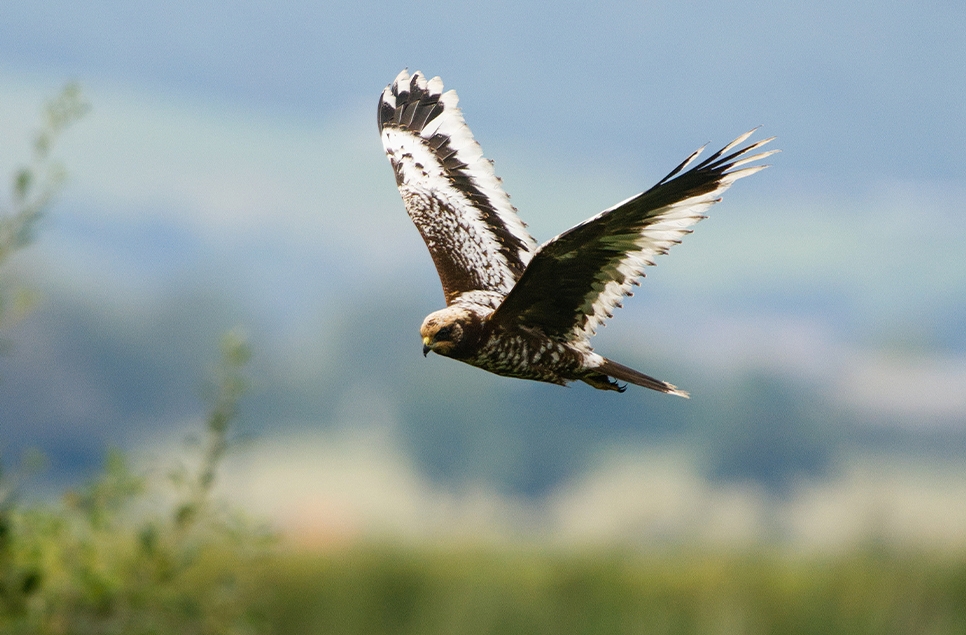
Welcome to our autumn wildlife round up from WWT. Join us as we explore this autumn’s highlights brought to you by Leigh Marshall, our Head of Reserve Management. Let’s dive in!
Caerlaverock’s wild adventures: grazing, fences and floods
This summer’s heavy rain (200mm in August alone!) threw us a few curveballs, with many projects challenging in the mud. But that didn’t dampen our spirits as we pushed ahead with the second year of our Wilder, Wetter Caerlaverock project. We’ve added new fencing, including some that’ll allow us to graze parts of the saltmarsh that haven’t been grazed in years. It’ll be exciting to see how this affects biodiversity.
A lucky twist of fate
Our diggers had to take a break from their work creating new ponds and blocking up old drainage, when an unexpectedly huge tide covered the whole work site. But it was good news for some, as the spoil heaps provided high tide roost sites for over 300 lucky ringed plovers and dunlin.
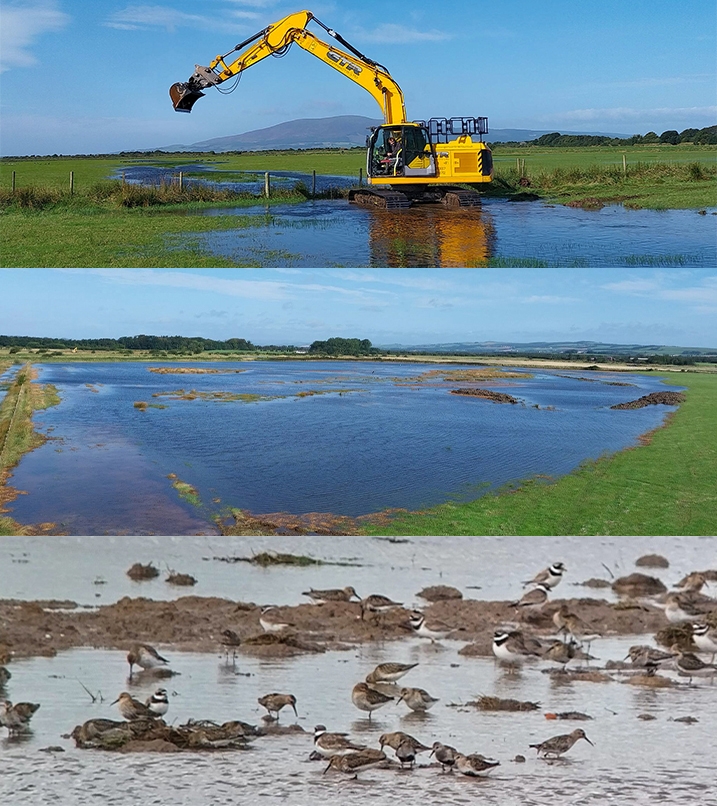
Marsh harrier heaven
Daily sightings of marsh harriers and nightjars remind us how important Caerlaverock is for these spectacular birds!
We’re also thrilled with the early success of our GPS NoFence” collars for managing cattle, which will make our future habitat work easier. Plus, our volunteers have been busy collecting and sowing wildflower seeds, so we’re looking forward to even more wildflower meadows next year.
And in exciting news, a new moth species for us was found on the reserve in September. First recorded in Scotland only last year, it’s wonderful to see the barred hooktip make it onto the Caerlaverock list.
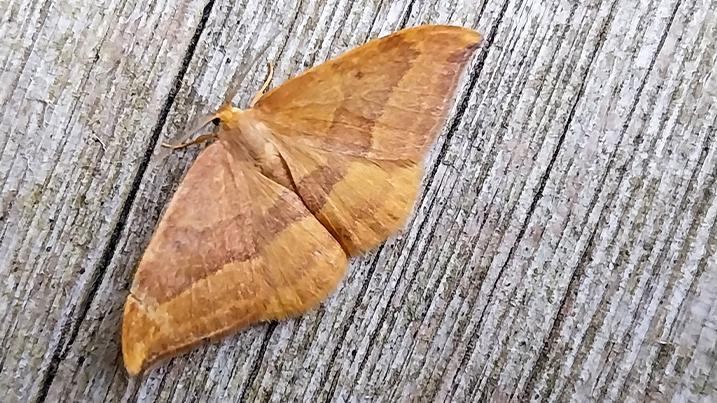
Martin Mere: bittern babies and pinkie success
It’s been a bittern bonanza at Martin Mere! Our female bitterns have fledged juveniles, now often seen around the Ron Barker Hide, making for stunning autumn sightings.
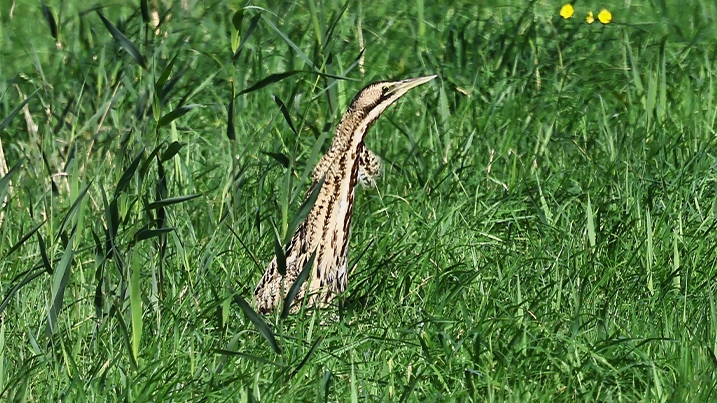
Injured pink-footed geese who’ve made Martin Mere their summer home successfully raised two goslings. This is a first for the site and a very rare occurrence in the UK.
Our English longhorn cattle have been busy keeping our stunning meadows in top shape, ready for the arrival of tens of thousands of pink-footed geese, with the first flock arriving at the end of August. We’ll soon be raising our water levels ready to create the perfect feeding spots for our wintering birds.
Castle Espie’s new discoveries
Exciting new finds on site include the migrant hawker dragonfly and the rare water stick insect, showing that our conservation efforts continue to attract diverse species.
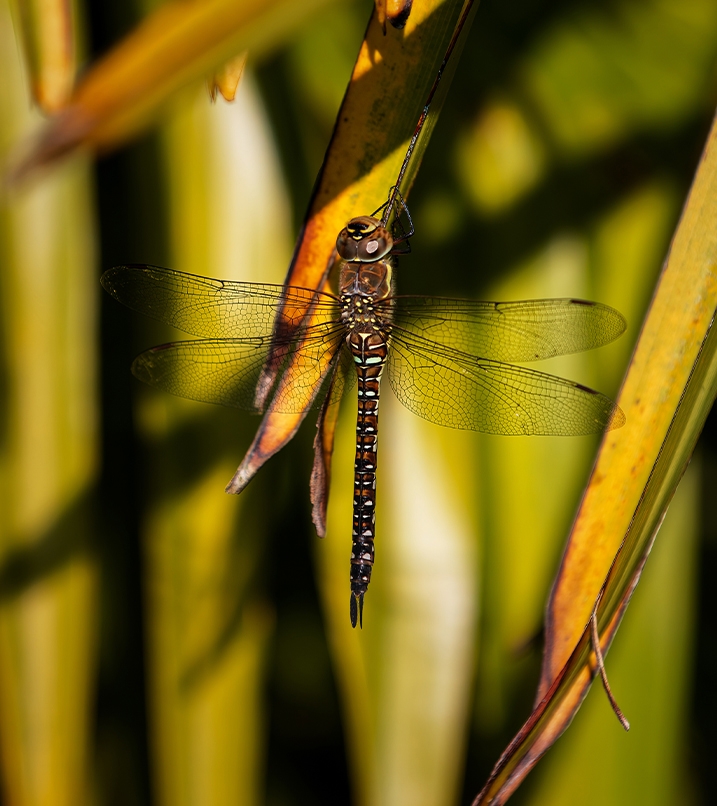
Meanwhile our grazing at the old brickworks site has been a great success, helping create a healthy and biodiverse habitat. A recent roost survey counted 166 little egrets, and our light-bellied brent census recorded over 3,000 birds in our part of Strangford Lough.
Welney’s season of spoonbills, cranes and early swans
It’s been a spectacular season at Welney! Common cranes, spoonbills, and cattle egrets graced us with their presence, along with the early arrival of whooper swans. But managing this dynamic wetland isn’t without challenges. Heavy rainfall caused the Ouse Washes to flood earlier than usual, and we had to evacuate over 2,000 cattle from the area.
? Spoonbill youngster making its way in the world ?
— WWT Welney (@WWTWelney) September 4, 2024
How are your youngsters this #BackToSchool week?
? Bob Ellis#Wildlife #Nature #Wetlands #Birds #Summer #Autumn #BackToSchool2024 pic.twitter.com/2fh5OVTupz
In good news, spoonbills bred in Cambridgeshire at RSPB Ouse Washes for the first time since the 17th century.
Despite the flooding, our dedication to protecting and managing this unique landscape remains unwavering. We know that each flood brings challenges but also emphasises the need for healthy, expansive wetlands.
Arundel’s munching moos
August brought in the ‘marvellous moos’ - six highland cattle whose grazing supports our wading birds and invertebrates.
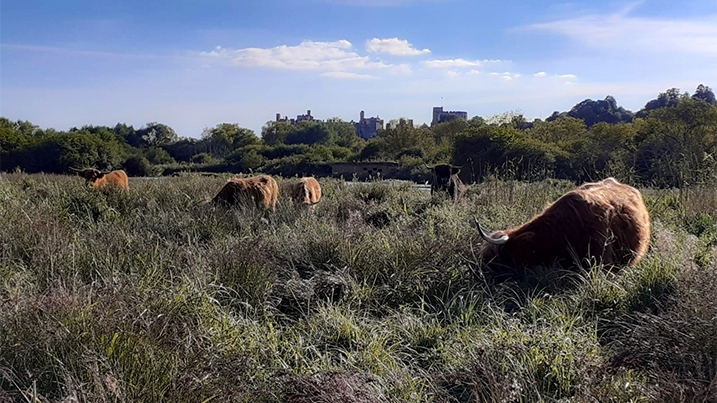
A star showing
Our reed and sedge warblers have begun their migratory journey south back to the warmer climes of Africa. While gadwall, teal, and shovelers continue to make themselves at home.
But drumroll please for the real star of the show this season…… cattle egrets bred on site ! This is the first time this has ever happened across any of our reserves. And we’re sure the moos will also appreciate the work they do gobbling up those pesky flies.
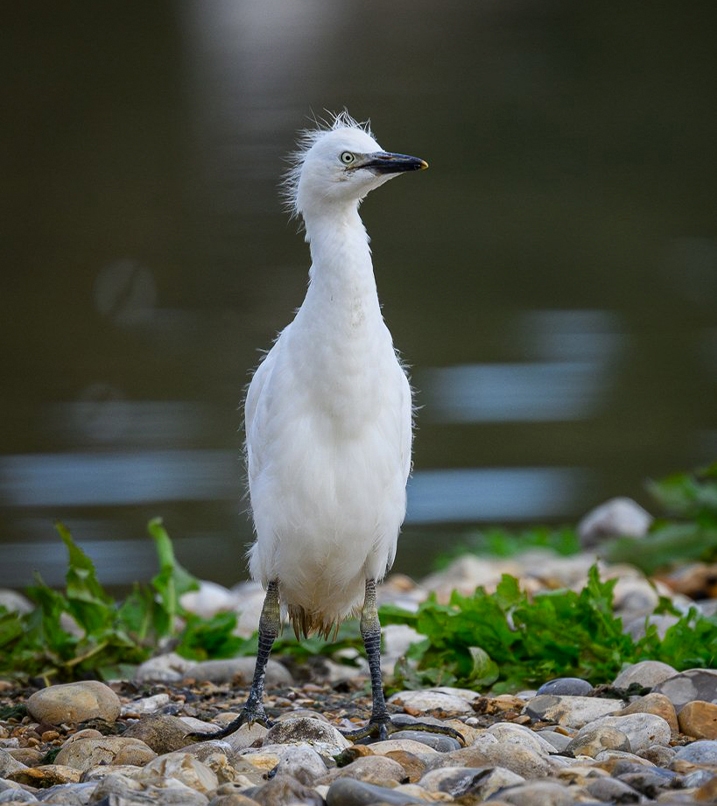
London Wetland Centre’s migration marvels
Our marsh is coming back to life after summer maintenance, with green sandpipers, migrant hawkers, and willow emerald damselflies enjoying the newly prepared wetlands.
Early autumn brought waves of migrating birds like black redstarts and meadow pipits - a reminder that this urban oasis provides a crucial wetland for many.
Steart Marshes: a successful first
Autumn at Steart Marshes kicked off with the first successful nesting of bearded reedlings - an exciting milestone!
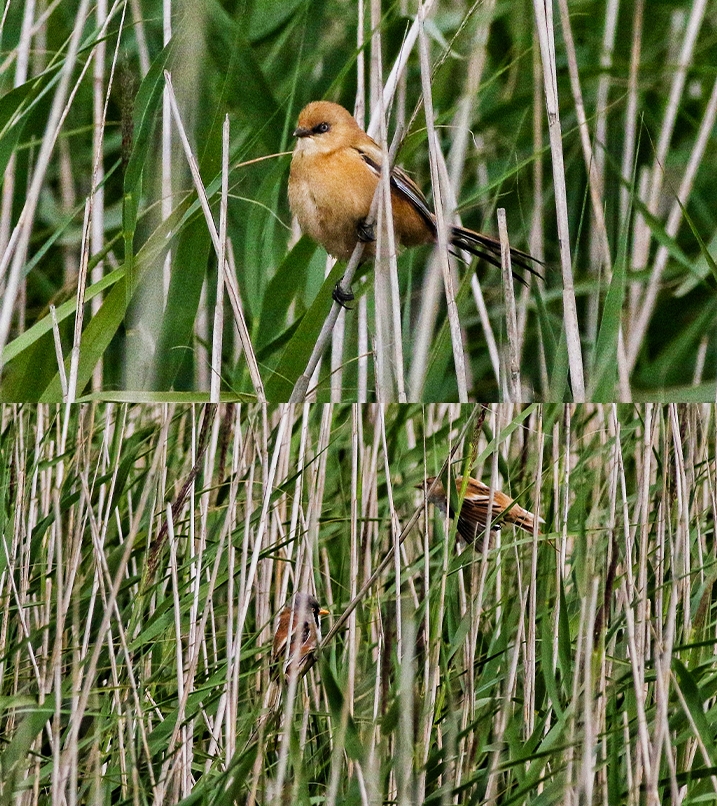
As winter approaches, migratory birds are arriving. Meanwhile, this season’s habitat work, including new scrapes and improved predator fencing, is making it a promising site for breeding lapwing come spring.
Slimbridge: an avian Serengeti on display
Slimbridge has been a hotspot for avian visitors this season, from marsh harriers to an osprey.
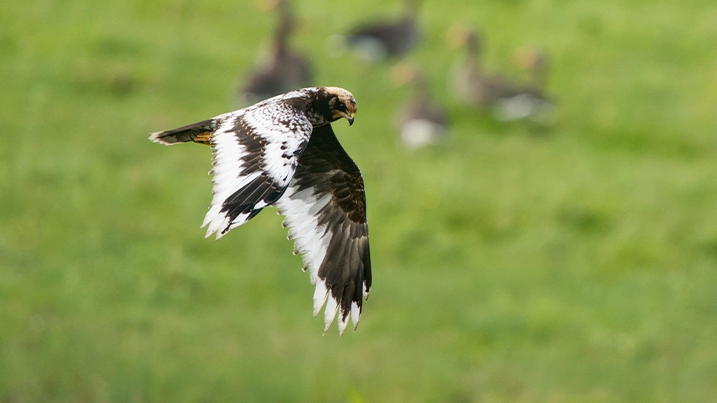
The list of sightings goes on, with highlights like black and Arctic terns, bitterns, and spoonbills wowing visitors, with a even a rare corn bunting being spotted.
Our maintenance work is in full swing, from mowing to habitat restoration. We’re all hands on deck keeping Slimbridge in tip-top shape. Recent trail and hide repairs ensure a safer, more enjoyable experience for visitors eager to witness the autumn spectacles.
Llanelli welcomes spectacular numbers of waders
After a successful restoration of the Saline Lagoon banks, Llanelli has been bustling with bird activity. This important wildlife refuge is now boasting over 1,000 black-tailed godwits, a record 17 spoonbills, and six great white egrets.
A hair-raising moment
Recent habitat work on our Millennium Wetlands promises ideal nesting areas for ground nesting birds, particularly lapwing. This involved getting a digger and tractor onto the wetland’s main island using a floating pontoon. Definitely a heart stopping test of nerves for the team.
Invasive species continue to challenge us, but our dedicated team is forging ahead with plans to enrich the reserve’s woodlands this winter for species like willow tits.
Washington’s curlews steadily build
It’s been a bit of a balancing act getting the right mixture of water and exposed mud at Washington, as water level management has been a key focus this autumn. But our hard work is paying off with numbers of wintering curlew building up with over 300 currently roosting on site.
Common and Jack snipe are also arriving for the winter, along with redwing and fieldfare, with water rail also being heard among our reedbeds. We’re also seeing good numbers of passing migrant waders making good use of our wetlands. We’re loving seeing flocks of pink footed geese flying and whooper swans flying over our site on their way to their wintering grounds. And if you’re into fungi hunting, now’s a great time to come and see what you can spot as we’ve got lots around our site at the moment.
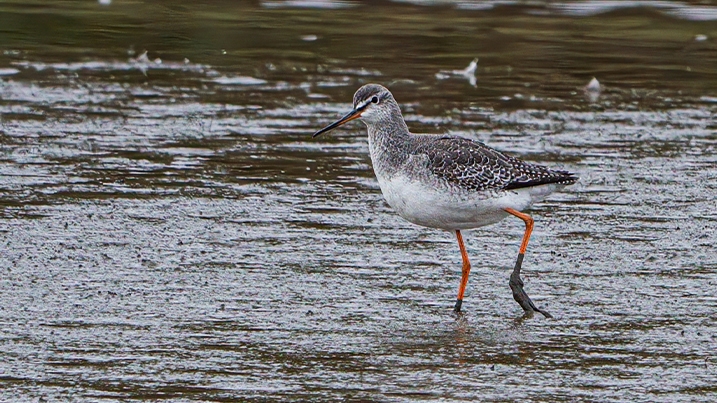
Supporting Wildlife, Together
Thank you for supporting our work across our WWT reserves. Each of these achievements is only possible with your help. Together, we’re creating a brighter future for wildlife.
Ready to get your next nature fix?
This autumn, as migratory birds flock to our wetlands, each of our centres is ready to offer you the most wonderful wildlife encounters.
Not a member? Book online and save time on arrival.
Find your nearest WWT wetland siteHeader image: marsh harrier at Slimbridge © Jonathan Bull/X



